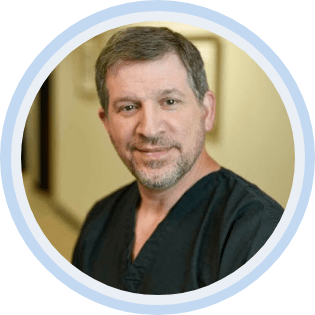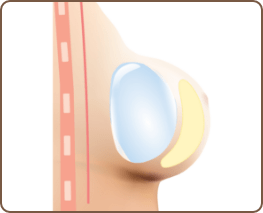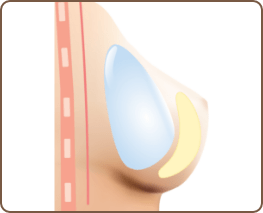Breast Augmentation
Quick Facts About Breast Augmentation
- Potential Benefits: Enhanced breast volume, fullness, and shape and improved breast symmetry and contours with a natural-looking appearance
- Candidates: Must be in good overall health and 18+ years of age for saline implants or 22+ years of age for silicone implants
- Procedure: Typically,breast augmentation is an outpatient procedure (approximately 1-2 hours) under general anesthesia
- Recovery: Most patients can return to non-strenuous work and daily routines within 1 week but should avoid lifting arms above the head for 1 to 2 weeks
- Surgeon’s Credentials: Two decades of experience as a board-certified plastic surgeon with active membership in the Texas Society of Plastic Surgery and the American Society of Plastic Surgeons (ASPS)
At Holzman Plastic Surgery, breast augmentation (or breast enlargement) using breast implants is one of our surgical specialties, and as such, it is the most requested of our procedures. Dr. Steven Holzman, a leading plastic surgeon, can achieve outstanding results that are natural-looking and balanced, giving women the enhanced breast volume and shape they desire.
- What Is Breast Augmentation?
- Breast Augmentation Candidates
- Breast Implant Types
- Breast Implant Shapes
- Choosing the Right Breast Implant Size
- Breast Augmentation Procedure
- Breast Augmentation Recovery
- Breast Augmentation Results
- Breast Augmentation Scars
- Breast Augmentation Alternatives
- Breast Augmentation Cost
- Breast Augmentation FAQs
What Is Breast Augmentation?
Breast augmentation is a cosmetic procedure that is intended to improve the size, fullness, and shape of the breasts. Many women also use breast augmentation to enhance balance and symmetry between the breasts. Dr. Holzman utilizes the most advanced techniques available to achieve a natural-looking result that provides a proportional and appealing outcome. Each treatment plan is customized to ensure the optimal result, from incision location to implant shape and style.
Who Is a Good Candidate for Breast Augmentation?
The most important factor is that you are in good overall health. Other considerations will depend on the individual. Women should be 18 years of age or older for saline implants and 22 years of age or above for silicone implants. You should have reasonable expectations for the outcome and be able to complete all guidelines during recovery to achieve the desired result. We will discuss with you what to expect at every stage of treatment so you are well-informed, and we will monitor you following surgery to provide the best care possible from start to finish.
What Types of Breast Implants Are Available?
There are two basic types of breast implants: saline and silicone. Both are approved by the US Food and Drug Administration (FDA) and both have proven effective at bringing patients successful breast augmentation, breast lift, and breast reconstruction results. The types of breast implants available at our practice come in hundreds of sizes and shapes. More recently, the density of the silicone gel implants is being altered so that now there are several different options, depending on certain patient factors. Dr. Holzman will work with you to find the optimal implant to meet your goals.
Silicone Breast Implants
In 2006, the FDA approved silicone breast implants for use in breast augmentation procedures for patients over the age of 22. Silicone implants are made of a silicone outer shell containing a silicone gel. This type of breast implant can often feel more natural than its saline counterpart, and there are fewer instances of rippling with silicone implants. However, silicone implants typically require a larger incision for placement. If a silicone implant ruptures, it is less noticeable than a saline implant, as the silicone ones do not lose volume, so you will remain the same size. Patients can develop capsular contracture after breast augmentation and may experience a change in the shape and firmness of the implant, which can cause symptoms such as pain and asymmetry. Patients who have silicone breast implants should have their breasts checked regularly to make sure they are without problems, and they should not hesitate to call their doctor if they feel something may be wrong with the implant. Women of the appropriate age should still get mammograms regularly to check the breast tissue.
Saline Breast Implants
Saline breast implants were the most common type used in breast enlargement surgery but now have been replaced by silicone implants. Saline implants are composed of a silicone outer shell and are filled with a sterile salt-water solution. Saline breast implants are not pre-filled before insertion – they are empty when placed into the breast pocket and are filled later during the procedure. This is advantageous in that the incision made for placement is often smaller, which typically results in less scarring. One disadvantage of saline implants is they can cause the appearance of rippling under the breast in some cases. Dr. Holzman rarely uses saline implants because he feels that they give a less than satisfactory outcome and have a noticeably shorter life span than silicone implants. Saline implants are less expensive than silicone, but they need to be replaced via breast revision more frequently, so over a lifetime they may end up costing more that a silicone implant.
“Great doctor and great surgery. Everyone in the office was incredible and very helpful. ”
How Do I Choose the Right Breast Implant Size for Me?
A good way to achieve a look that appears natural and beautiful is to choose a size of implant that adds volume to the bust line while looking proportionate to the rest of your body. Dr. Holzman will show you a variety of implant types, sizes, and shapes to help you get an idea of your options. It really takes some experience from the surgeon in a personal consultation to help you select the best implant for you. Feel free to bring your vision to Dr Holzman as far as the amount of enhancement that you desire and he will help you achieve that goal.
How Is the Breast Augmentation Procedure Performed?
Breast augmentation can be achieved through a variety of breast implant placement techniques depending on the anatomy of the patient as well as the desired outcome. The most commonly utilized surgical techniques include periareolar (around the outer edge of areola) and inframammary (along the natural breast crease) incisions. Once inserted, the implant can sit on top of or below the chest muscle (subglandular vs. submuscular placement) to achieve optimal shape, lift, and firmness. Dr. Holzman is careful to keep the appearance of the new breasts symmetrical and scarring as minimal as possible to deliver the superior results our patients expect.
What Should I Expect During Breast Augmentation Recovery?
Breast augmentation usually takes one to two hours and is an outpatient procedure, meaning you should be able to return home the same day as the operation. You will have some bruising and swelling in the chest, and medication will be provided to manage your pain. Most patients experience minimal discomfort after the first few days, and we will work with you to optimize your experience. You should avoid strenuous activity for the first six weeks, after which point you can transition back to your normal fitness regimen. Results will be mostly apparent after one to two months, with only a small amount of swelling remaining that you may not even notice. This minor swelling can last up to a year. Your care, comfort, and results are our highest priorities, and we will monitor your progress and provide assistance at any point.
General Timeline for Breast Augmentation Surgery Recovery
1 to 3 Days After Surgery
- Expect to feel tightness, soreness, and discomfort in the chest area and a possible change in breast sensitivity
- Prescribed oral medication may be used to alleviate pain or discomfort
- Get adequate rest but try to increase gentle walking and movement to promote blood circulation
- Compression dressing should be worn to help minimize swelling and retain new breast shape
- Plan to have a family member or friend available to help you at home
5 to 7 Days After Surgery
- Reduced pain and discomfort, typically more mild symptoms
- May be able to return to sedentary jobs and other non-strenuous activities
- Avoid lifting arms above the head
- Continue wearing a soft fabric, wireless compression garment at all times for up to six weeks
1 to 2 Weeks After Surgery
- May resume most normal daily routines
- Continue to use care when lifting and moving arms
- Continue to wear compression garments as directed
3 to 4 Weeks After Surgery
- May resume light exercise (walking or easy cycling)
- Continue to wear compression garments as directed
6 Weeks After Surgery
- May transition back to a normal fitness routine
- Ease into more strenuous activities and heavy lifting (over 10 pounds)
- Switch from a compression garment to a supportive bra
6 to 8 Weeks After Surgery
- Generally, patients can expect to feel back to normal
- Breasts should have a more natural look and feel as swelling resolves and they settle into their permanent position
*Contact our office or your physician if you have any questions or concerns during the recovery process.
What Breast Augmentation Results Can I Expect?
The majority of our patients who have undergone breast augmentation (enlargement) surgery are extremely happy with the results. Dr. Holzman’s keen artistic eyes and proficient surgical skills help him meet the individual needs of each patient in creating their ideal bust line.
Will I Have Scars After Breast Augmentation?
As with any surgical procedure, there may be some scarring after breast augmentation. That said, breast implants can usually be placed using very small incisions—often only 1-2 inches in length. Dr. Holzman takes special care during each procedure to ensure that the incisions are discretely concealed along the natural lines and contours of the body. Depending on the implant placement method utilized, any scarring will likely be either blended around the outer edge of the areola (using the periareolar technique) or camouflaged along the natural breast crease (using the inframammary technique).
Are There Alternatives to Breast Augmentation?
For patients interested in breast enhancement but who do not wish to have implants, there are alternative procedures that can improve shape and volume. A breast lift (mastopexy) is an excellent option for those looking to restore a more youthful, lifted appearance. This procedure reshapes and repositions the breasts by removing excess skin and tightening the surrounding tissue, but it does not add volume.
For those who desire a modest increase in size, fat transfer to the breasts can be a natural alternative. This technique involves using liposuction to harvest fat from another area of the body, which is then purified and injected into the breasts to enhance fullness and contour. While fat transfer provides subtle volume enhancement, it may not achieve the same level of augmentation as implants.
During your consultation, your surgeon can help determine which approach aligns with your aesthetic goals, body type, and preferences.
How Much Does Breast Augmentation Cost?
On average, the cost of breast augmentation at our practice is around $7,500. This number reflects the surgeon’s fee alone; it does not include the cost of anesthesia, use of the hospital facility, or any other fees. We want you to have all the information you need to make the best decision for your lifestyle, budget, and goals. During your initial consultation, our medical team will provide a detailed estimate of your treatment plan’s total cost. For information about payment plans, please don’t hesitate to ask about our options.
Additional FAQs About Breast Augmentation
-
Is breast augmentation safe?
Although all surgical procedures come with some degree of risk, breast augmentation is generally considered very safe—especially when performed under the care of a board-certified plastic surgeon like Dr. Holzman. In order to promote optimal healing and results, it is important to carefully follow all of Dr. Holzman’s post-operative instructions and to attend your follow-up appointments as directed.
We also understand that many patients may be concerned about the apparent links between breast implants and Breast Implant-Associated Anaplastic Large Cell Lymphoma (BIA-ALCL). BIA-ALCL is a very rare form of immune system cancer that has been associated with certain types of breast implants—predominantly specific kinds of textured breast implants—and tissue expanders. It should be noted that the risk of developing BIA-ALCL is very low, and the condition can typically be treated quite effectively when discovered early. That said, all of us here at Become Plastic Surgery take your comfort and safety very seriously, and we want our patients to feel confident and empowered throughout their breast augmentation journey. In response to concerns surrounding BIA-ALCL, Dr. Holzman will not be utilizing textured breast implants or tissue expanders at this time.
The following is a direct quote from the American Society of Plastic Surgeons regarding BIA-ALCL:
“Women with saline and silicone gel breast implants may have a very small and possibly increased risk of developing anaplastic large cell lymphoma (ALCL) in the scar capsule adjacent to the implant. This is a very rare disease and is currently being investigated as to its relationship to breast implants, and whether this is even a cancer or a Lymphoproliferative Disorder. ALCL is an extremely rare cancer of the immune system which can occur anywhere in the body. The National Cancer Institute estimated 1 in 500,000 women per year in the U.S. are diagnosed with ALCL. ALCL in the breast is even rarer with approximately 3 in 100 million women in U.S diagnosed per year. The relationship between breast implants and ALCL is unclear and is currently under investigation. In most cases, women observed changes in the look or feel of the area surrounding the implant after their initial surgical sites were fully healed. Patients with breast implants should be followed by a surgeon over time and seek professional care for implant-related symptoms such as pain, lumps, swelling, or asymmetry. Patients should monitor their breast implants with routine breast self exams and follow standard medical recommendations for imaging (e.g. Mammography, Ultrasound, MRI). Abnormal screening results or implant-related symptoms may result in additional costs and expenses for tests and/or procedures to properly diagnose and treat your condition. Tests and procedures could include but may not be limited to: obtaining breast fluid or tissue for pathology and laboratory evaluation and surgery to remove the scar capsule around the breast implant, implant removal or implant replacement.”
During your consultation, we are happy to answer any further questions you may have about breast implant safety and BIA-ALCL risks. -
How long do breast implants last?
The longevity of your breast implants will vary based on a number of factors, including the type of implants placed (silicone vs. saline), your existing body type and breast tissue, and your lifestyle habits. That said, modern implants are designed to be quite durable, and many patients find that their implants can last for decades without replacement.
The need for a breast implant revision, exchange, or removal can arise for a number of reasons, including personal aesthetic choices or complications such as capsular contracture and/or implant rupture. It is important to be vigilant about the state of your implants, and if you notice any changes in shape or volume, feel a tightening or hardening of the breast tissue, or experience any discomfort, you should contact your doctor. It can also be helpful to have the state of your implants assessed by a board-certified plastic surgeon every 5-10 years to ensure they are still in good condition. -
What type of bra should I wear after breast augmentation?
The best type of bra to wear after breast augmentation will depend on the stage of healing you are in. Immediately after surgery, patients should wear a special compression bra without underwires. These garments are designed to help support the breasts, keep any dressings in place, and restrict excess movement in order to promote faster healing. A compression bra will typically need to be worn both day and night for a few weeks after surgery, at which point you can transition to a sports bra. When picking out your sports bras, it is best to find highly-supportive garments without underwires. Underwires can irritate your incisions and interfere with healing. Choosing a front-clasping bra can also help limit the amount of effort needed to remove it, which can be helpful while you heal.
Healing times vary from patient to patient, and it is important to consult with Dr. Holzman before transitioning to any bras that have underwires. Dr. Holzman also recommends investing in quality bras that will provide your new implants with proper elevation and support. A supportive bra can help extend the longevity of your implants and keep them in good condition for years to come. -
Can I breastfeed with breast implants?
Implants should not negatively impact your ability to breastfeed in most cases. However, you should talk to Dr. Holzman about any future childbearing or breastfeeding plans you may have during your consultation. This will allow him to approach surgery and implant placement in such a way as to yield optimal aesthetic and functional results. -
Will breast implants affect future mammogram screenings?
Mammograms are an important screening tool when it comes to detecting breast cancer, and Dr. Holzman encourages all women of the appropriate age to schedule regular tests. When you go in for a mammogram, you should be sure to inform the technician that you have breast implants, which will allow them to adjust the screening process accordingly. This often entails taking extra images from different angles in order to visualize the entirety of the breast around the implant. If you are at a particularly high risk for breast cancer or if you simply wish to ensure your mammograms go as smoothly as possible, Dr. Holzman can also discuss submuscular implant placement with you. Submuscular placement positions the implant under the pectoral muscles, rather than on top of them (as in the case of subglandular implants). This allows for less interference during mammograms. -
How should I sleep after breast augmentation?
Dr. Holzman recommends that patients sleep on their backs in an elevated position for the first few days to weeks after breast augmentation surgery. This keeps the implants in a more ideal position while the protective tissue capsules form, optimizing your aesthetic results. Sleeping in an elevated position can also minimize swelling and improve circulation for more efficient healing. -
How should I prepare for breast augmentation?
Dr. Holzman will provide you with detailed pre-operative instructions in advance of your breast augmentation procedure, which you should follow carefully. Some generalized tips for optimizing your recovery period include:
-Arrange to have someone drive you to and from the hospital on the day of your procedure
-Do as many household chores as you can in advance of surgery so that you won’t have to worry about them during your recovery
-Pre-make nutritious, easy to digest meals that are simple to heat up or that can be eaten cold
-Schedule time off from work and make childcare arrangements, as needed
-Prepare loose, comfortable clothing—preferably items that button or zip in the front so you won’t need to raise your arms above your head while changing
-Consider having a caregiver either present or on-call for at least the first few days after surgery
-Get a good night’s sleep the night before your procedure -
When can I work out after breast augmentation?
Dr. Holzman generally recommends that patients wait at least six weeks after breast augmentation surgery prior to resuming their usual workout routine. This ensures that protective tissue capsules have time to form around your new implants, keeping them in the desired position. If exercise is resumed too early, it can disturb the breast pocket and disrupt capsule formation, leading to a range of side effects, including implant dislocation, breast asymmetry, and even implant rupture. Exercising too soon after surgery can also irritate or even reopen your incisions, increasing the risk of infection and delaying healing.
During your post-operative appointments, Dr. Holzman can offer personalized guidance regarding how and when to resume specific physical activities.
Medical References for Breast Augmentation:
ASPS: Breast Augmentation
Medical News Today: Breast Augmentation Recovery
Contact Us
Please contact us to schedule a consultation. We will be happy to go over the many breast implant options available at our practice.








